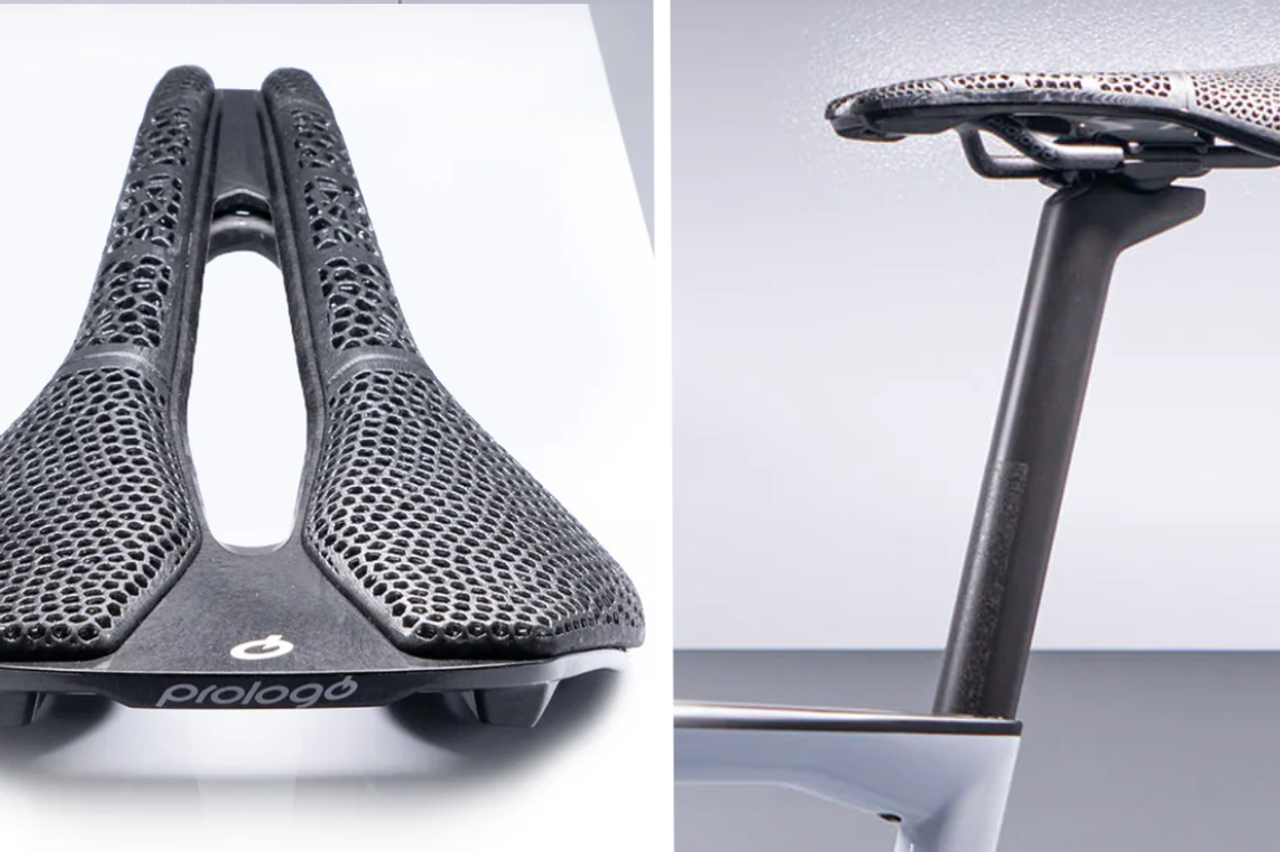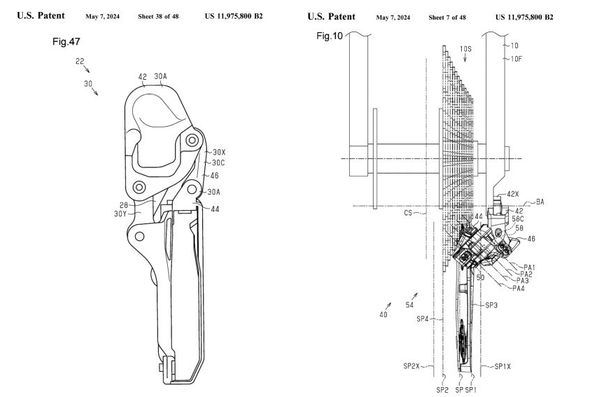Prologo unveils first 3D printed saddle, weighing just 149g
Nago R4 Pas 3DMSS is made up of 10 separate sectors with differing densities
Patrick Fletcher
Deputy Editor
© Prologo
The new Prologo Nago R4 3D saddle
A decade after experimenting with 3D printing technology in its saddle manufacturing, Prologo has unveiled its first fully 3D printed saddle, weighing in at an eye-catching claimed 149g.
The new saddle is named the Nago R4 Pas 3DMSS, which follows the same shapes and dimensions of the Nago R4 used by the likes of Mark Cavendish and Geraint Thomas.
The latter part of the new moniker is a reference to the printing process and the ‘Multi Sector System’ (MSS) technology that gives the the saddle 10 separate sectors - five on each side. According to Prologo, this is designed to offer more individualisation via greater adaptability to each rider’s unique pressure points.
Pressure points are at the heart of the concept of the new saddle, with Prologo basing its design on results from its proprietary system, Pressure Map MyOwn, which analysed pressure areas exerted on the saddle by professional and non-professional riders.
Pressure Map MyOwn tests, Prologo's proprietary system which allowed the scientific analysis of the pressure areas exerted on the saddle by various professional and non-professional cyclists.
The result is a saddle split into five sectors but spread across three distinct areas - rear, middle, and front - with the hardest layup found at the rear, the softest in the middle, and a middle ground on the nose.

© Prologo
The different sectors of the saddle
The rear sector features a “high density and high elastic coefficient designed to “support the ischial bones and facilitate the traction phase of pedaling”, while the three sectors in the middle have low density and medium elasticity “to offer maximum comfort where the soft tissues rest”. The front sector features medium density and low elasticity.
These sectors tie into the saddle's significant weight claim, with Prologo scaling the Nago R4 Pas 3DMSS at 149 grams for dimensions of 245x137mm. This would make it just two grams heavier than the standard Nago R4, despite 3D printing usually carrying a weight penalty.
Prologo’s claim that it’s the “absolute” lightest 3D model on the market might not be entirely accurate but it does compare favourably against 3D models from major brands, such as Specialized’s S-Works Power with Mirror (190g) and Selle Italia’s SLR Boost 3D Kit Carbonio Superflow (166g).
Prologo used its pressure mapping system to identify those areas where it was possible to limit the materials used. The saddle also comes with an injected carbon fibre base and Nack (Nano Carbon Fibre) rail seen on the lightest version of the Nago R4.
The saddle is set to go on sale in April, with details on pricing yet to be released.













.jpg?w=600&auto=format)